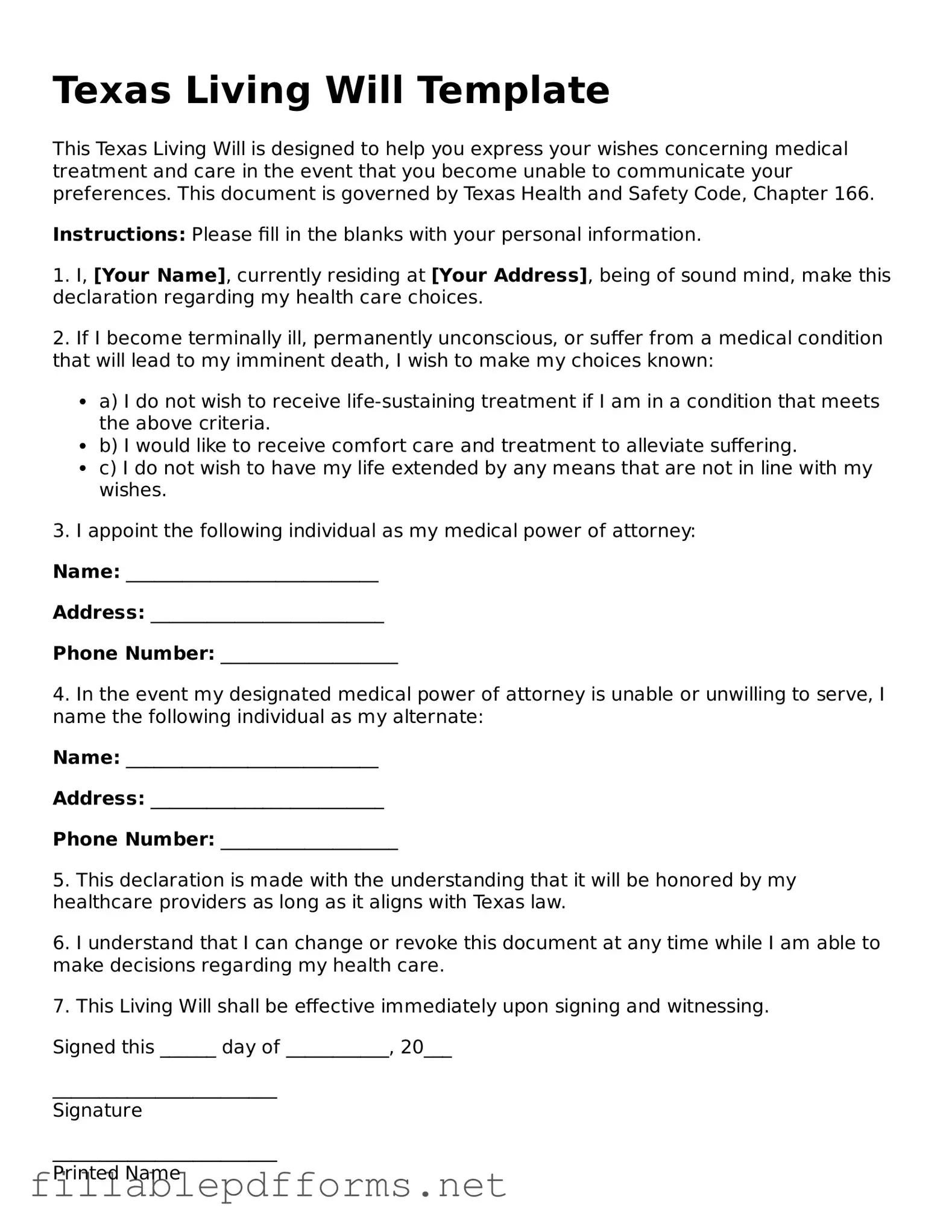In the state of Texas, the Living Will is an essential document that allows individuals to express their healthcare preferences in advance, particularly in situations where they may be unable to communicate their wishes. This form provides a clear outline of the medical treatments one does or does not want to receive if facing a terminal condition or a state of irreversible coma. By completing a Living Will, individuals can ensure that their values and choices regarding end-of-life care are respected, relieving family members and healthcare providers from the burden of making difficult decisions during emotionally charged times. The Texas Living Will form includes sections for detailing specific medical interventions, such as resuscitation efforts, mechanical ventilation, and other life-sustaining treatments. Importantly, it also allows for the appointment of a healthcare proxy, someone trusted to make decisions on behalf of the individual should they become incapacitated. Understanding the nuances of this form is crucial for anyone wishing to take control of their healthcare decisions and ensure their preferences are honored, making it a vital part of personal and family planning.
